S
itting at his dining room table at his home in Snohomish County, Washington, Matthew Warbonnet, 77, pensively flips through a binder of black and white photos. His long, salt-and-pepper hair is pulled into a low ponytail and a multicolored beaded necklace rests around his neck. He squints and smiles while pointing to pictures of himself and his siblings from when they attended the Catholic-run, federally-funded, St. Francis Mission on the Rosebud Reservation in South Dakota. He pauses to stare at a photo of a young boy gleefully holding a puppy. That boy was him, before the neglect and violence started at St. Francis.
Warbonnet as a boy, before he was sent to the St. Francis Mission School.
Annie Marie Musselman for Rolling Stone
“You know,” he says, haltingly, “I can’t remember anything before the mission school. But I remember too much about the mission school.”
Warbonnet, Sicangu Lakota, first shared his experiences at St. Francis before Congress in May 2022, one of numerous survivors of the country’s Native American boarding schools — a federal program of forced assimilation that stretched from 1819 to 1969 at more than 400 educational institutions nationwide — who testified to horrific abuses they suffered there. The testimony took a lot out of him, he says, due to a resurgence of emotional and psychological pain.
One of Warbonnet’s earliest memories was the anguish of being separated from his family at just six years old. He’d been excited to go to school for the first time when his parents dropped him off at St. Francis in September of 1952. But that changed when he realized he wasn’t going back home.
“That night, of course, I started missing my parents,” he says. “You get lonely. Some of us would be crying.” There was a priest monitoring the children in what Warbonnet describes as a cubicle in the middle of the room. If the boys continued to cry, he says, the priest beat them. “He’d come out of that room and he’d pull the first kid out of his bed and start slapping him. Well, that taught me to choke things down, you know? I was just scared.”
Though his sisters were at the school in the girls’ dormitory, he wasn’t allowed to speak to them. He was only permitted to see his parents on holidays and summer break. The boys were made to do physical labor and regimented chores while learning the language of the white man. Seven days a week, they were forced to attend Catholic mass. They were told they were rotten for being born Indians. Physical abuse continued for years.
Across his kitchen table, Warbonnet lays out instruments similar to those that were used on him for punishment at the school: a thick leather belt with metal grooves, a willow stick, and a braided rope the children named “the Jesus rope.” Warbonnet made the replicas when he began sharing his story, to help people visualize the brutality to which the children were subjected. Whippings were so severe, Warbonnet explains, that it was standard to be sent to the infirmary to recuperate, sometimes for hours, or even days. He came to refer to the razor strap as his friend, because, he says, “it taught me not to feel when they were hitting me.” Priests would even use cattle prongs to electrocute the children. Warbonnet didn’t know what the tool was at the time, only that it burned his flesh and left marks that are still visible on his backside.
Warbonnet says there aren’t many St. Francis survivors who are still alive. Some of his classmates died from addictions, others by suicide. His body trembles and he begins to sob as he recalls his attempt to take his own life during a summer break after completing the eighth grade. His father found him hanging from a rope attached to a tripod used to pull motors out of vehicles that his father used to work on.
“I was ashamed of who I was,” he says, “because I didn’t know who I was.”
WARBONNET’S STORY IS one of countless tales from Indian boarding school survivors and their descendents that have emerged amid a wave of reckoning around the colonial, systematic efforts of the United States government and churches to eradicate Native communities. Hundreds of thousands of Native American children were forcibly removed from their homes and sent to these schools under the Indian Civilization Act Fund of 1819 and the Peace Policy of 1869 which adopted the mandatory Indian Boarding School Policy. The motto of that policy — “Kill the Indian, save the man” — is a quote by Richard Henry Pratt, a Union Army brigadier general who is considered the father of the movement to integrate Native children into white American society. Pratt established the Carlisle Indian School in Pennsylvania in 1879, which became the model for other Indian boarding schools across the country.
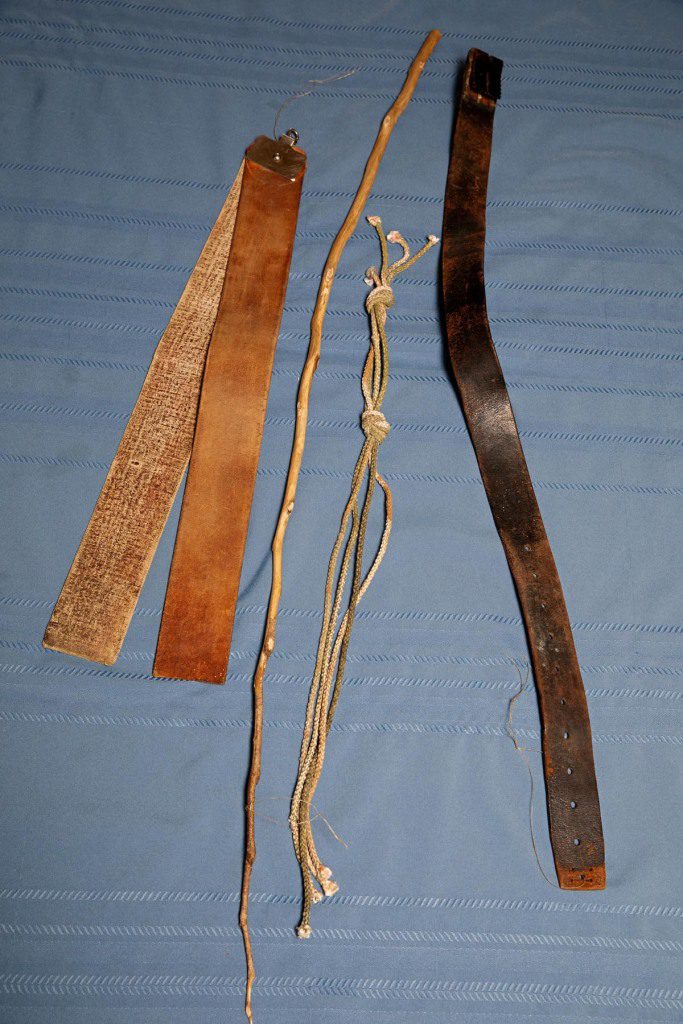
Warbonnet made these replicas of instruments of punishment used on him and his classmates at St. Francis.
Annie Marie Musselman for Rolling Stone
As a part of this program, Native children as young as three were stolen out of the arms of their parents. For years, Warbonnet harbored intense anger toward his parents for leaving him at St. Francis, until he came to learn that they’d had no choice. “This was a question that really bothered myself and a lot of the kids,” he says. “We hated our parents for sending us. We didn’t understand why that was. So when we grew up later, we found out that there was a law at that time which was being used against Indian parents. If they didn’t send their kids to school, they would be put in jail.”
Warbonnet’s parents had attended St. Francis themselves, although they didn’t talk about it with their children. Warbonnet suspects it was too traumatic for them. But his father carried his own permanent scars: In second grade, he ran away from the school in the dead of winter and froze all of his toes off. “My dad used to joke with us that he went into the military and didn’t have toes because he got captured and they tortured him,” Warbonnet says. “He said the enemy cut off a toe every day until all his toes were cut off and then he was rescued.”
Warbonnet learned the truth from his cousin as a teenager. He then confronted his father, who told him the real story. His father died at age 62 from a gangrene infection in his feet.
“In the end, that’s what killed him,” Warbonnet says, his voice breaking. He adds, “I can understand why he didn’t tell me the truth. Because one thing I never wanted to do was hurt my kids. I didn’t want them to be hurt when they learned what happened to me at that place.”
Some Native children were taken thousands of miles away from their families, and in many cases never made it back home. They were doused in kerosene to ward off infection or lice, their hair — which is sacred for many tribes and cut only during periods of mourning — cut short. Banned from speaking their language, their Indian names stripped and replaced with European ones. Placed in barrack-style housing, given numbers as identification, made to wear uniforms. They performed manual labor and suffered malnutrition. Physical, verbal, sexual, emotional, spiritual, and cultural abuse were rampant.
“The U.S. has some internal searching inside that we have to do as a collective,” says Deborah Parker. The CEO of the Native American Indian Boarding School Healing Coalition (NABS) — a network of Native academics, researchers, tribal leaders, boarding school survivors and their descendants working to establish a Congressional Truth Commission — Parker, 52, is at the helm of the efforts to expose the damages inflicted by the insidious 150-year program.
The purpose of the commission, Parker explains, would be to thoroughly investigate the losses that occurred through this violent genocide. To date, there has never been a full accounting of the number of children forced to attend these schools in the United States (between 2007 and 2015, there was a $72 million investigation into similar schools in Canada), or the number of children who were abused, died, or went missing from them. The commission would also examine the long-term impacts on the children and their families and hold subpoena power over churches, organizations, and the federal government to hand over records from the former boarding schools. Parker helped write the Truth and Healing Commission on Indian Boarding School Policies Act, which was originally introduced in Congress in September 2021 and she hopes could pass by the end of this year.
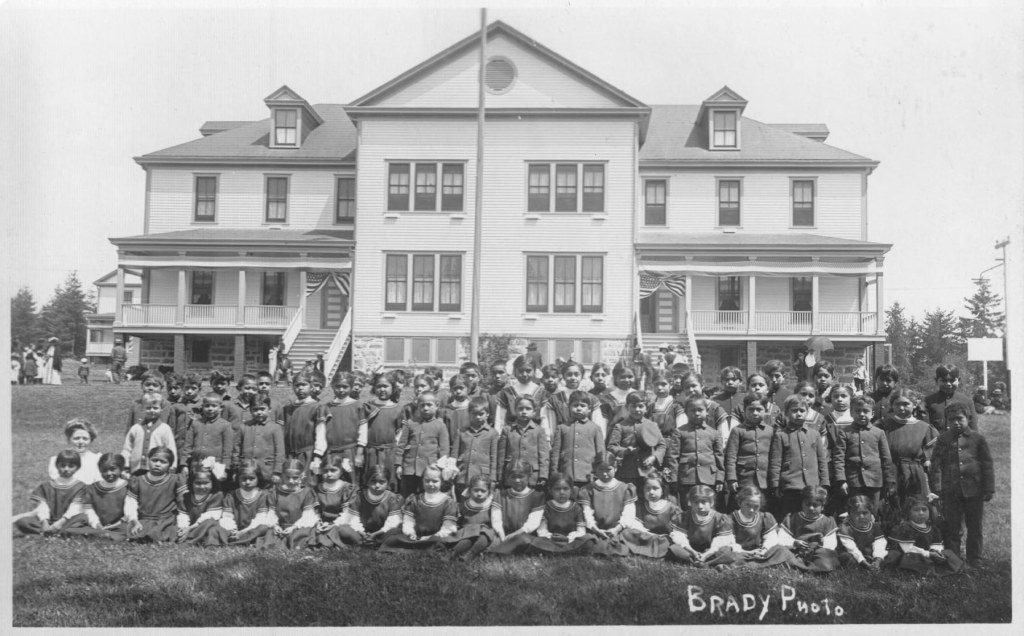
Students at the Tulalip Indian Boarding School circa 1912.
Courtesy of the Hibulb Cultural Center, Tulalip WA
“Once the bill is introduced [during this session] then we really have to hit Washington, D.C.,” Parker says. “We need tribal leaders. We need a lot of folks to really help push this bill. Then those records will need to come forward and be examined by the commission, who will draft their recommendations to the Senate and House and to the President. From there, we will see what’s recommended for the U.S. to be holding themselves accountable.”
A driving force behind that push is Secretary of the Interior Deb Haaland. The first Native American to serve as a cabinet secretary, Haaland launched the Federal Indian Boarding School Initiative in June 2021, which comprises both an extensive investigation by the Department of the Interior into such schools and a “Road to Healing” tour, a series of public hearings where she and other government officials listen to survivors and families recount their stories.
The first report issued as part of the investigation was released in May 2022. It documented 408 federal Indian boarding schools that operated across 37 states or then territories, including 21 schools in Alaska and seven schools in Hawaii. Marked and unmarked burial sites of children who didn’t make it out alive were found at approximately 53 different schools. The department expects the number of identified burial sites to rise.
“The consequences of federal Indian boarding school policies — including the intergenerational trauma caused by the family separation and cultural eradication inflicted upon generations of children — are heartbreaking and undeniable,” Haaland said in a press release that accompanied the report. “We continue to see the evidence of this attempt to forcibly assimilate Indigenous people in the disparities that communities face. It is my priority to not only give voice to the survivors and descendants of federal Indian boarding school policies but also to address the lasting legacies of these policies so Indigenous peoples can continue to grow and heal.”
As for the tour, Haaland will have visited a total of eight tribal communities throughout the United States upon its completion this fall, from Oklahoma to Hawaii, Michigan, Arizona, South Dakota, and more. The testimonies she’s gathered will be used to create a permanent oral history and to create recommendations on mental health support and healing initiatives.
NABS representatives have attended every “Road to Healing” tour stop, and on April 23 Parker will welcome its arrival on her home turf, the Tulalip reservation, which rests on the Puget Sound about 40 miles northwest of Seattle. The load of the responsibility and corresponding generational heartache she carries is heavy, she says.
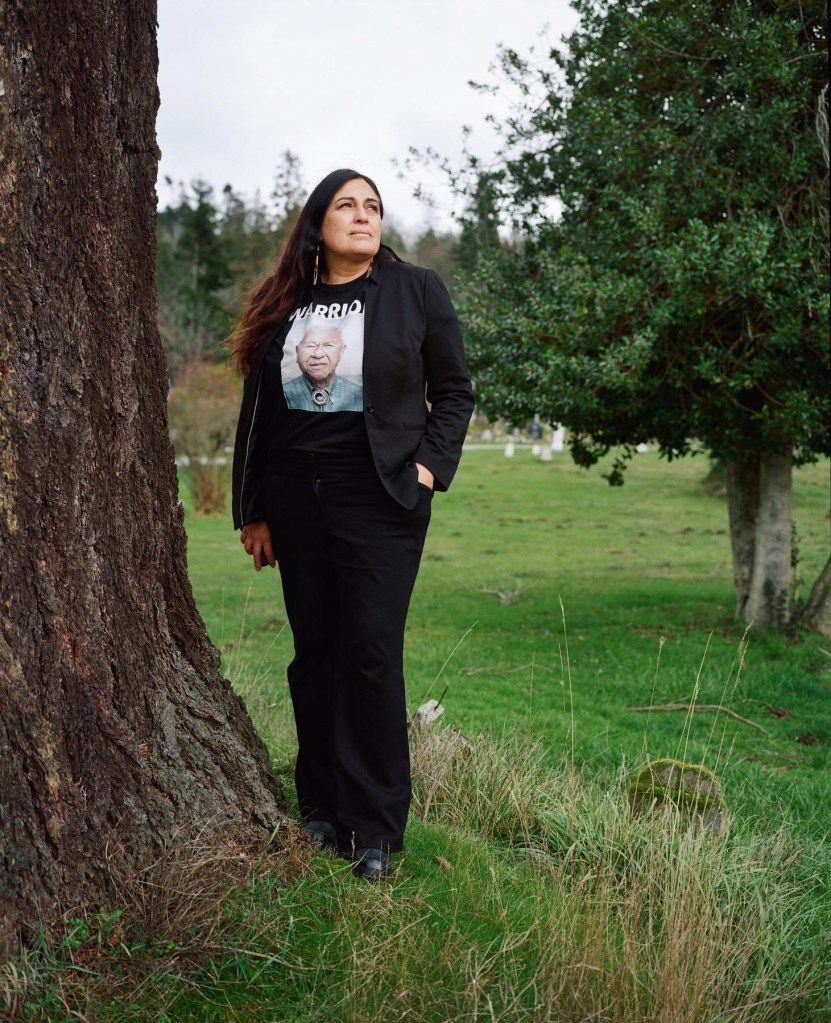
Deborah Parker, CEO of the Native American Indian Boarding School Healing Coalition, says “I can’t think of anything more evil than taking and abusing children.”
Annie Marie Musselman for Rolling Stone
“I can’t think of anything more evil than the taking of and abusing children,” Parker says, her voice cracking with emotion. “Some want to believe that this didn’t happen, because they’ve lived their lives off the back of people who have suffered great harm in this country — and in this case children, Native American children and their families. I see poverty on reservations. I see depression. I see sadness and grief, loss of life. And few people understand what that means and why — that thousands of our people were murdered [through colonization]. Children were taken from their mothers and grandmothers. Fathers, uncles; they were brutally taken.”
Parker can speak to this devastating legacy personally. Her own family did not escape the horrors of the Indian boarding school era.
ON A FOGGY MARCH AFTERNOON, Parker sits in a small room adjacent to what once was the dining hall at the Tulalip Indian Boarding School, recounting her great-great-grandmother’s story of being taken to these grounds at the start of each school year. She describes a time when she crouched with the elder matriarch, Hariette Shelton-Dover, under the family’s kitchen table, following orders to stay as still as possible and not breathe a word. Parker thought it was a game, until Shelton-Dover explained that they were re-enacting how would hide in hopes she wouldn’t be taken from her family. But each time she crouched under the table before the start of another school year, she’d be found. It was the police who would arrive to tear her out of her parents’ arms forcing her to go to the Tulalip school.
“These children couldn’t get out of these places, it was a prison for them,” declares Parker, looking around the room. We are in one of the last remaining buildings of the sprawling former school grounds.
Parker recalls her grandmother sharing about her long, lonely years here, where she attended from age five until her late teenage years. How she tip-toed around school staff in fear of punishment for being caught speaking her Snohomish Lushootseed language. Half of her school days were spent learning American academics, the other half performing tedious manual labor such as mopping floors, washing dishes for over 200 children, and working in the dreaded laundry room operating an industrial-sized ironing machine that Shelton-Dover witnessed other students’ hands be mangled in. Flashbacks of constant hunger pangs due to inadequate meals permeated her adult life as she worked to overcome the effects of physical, verbal, and emotional abuse.
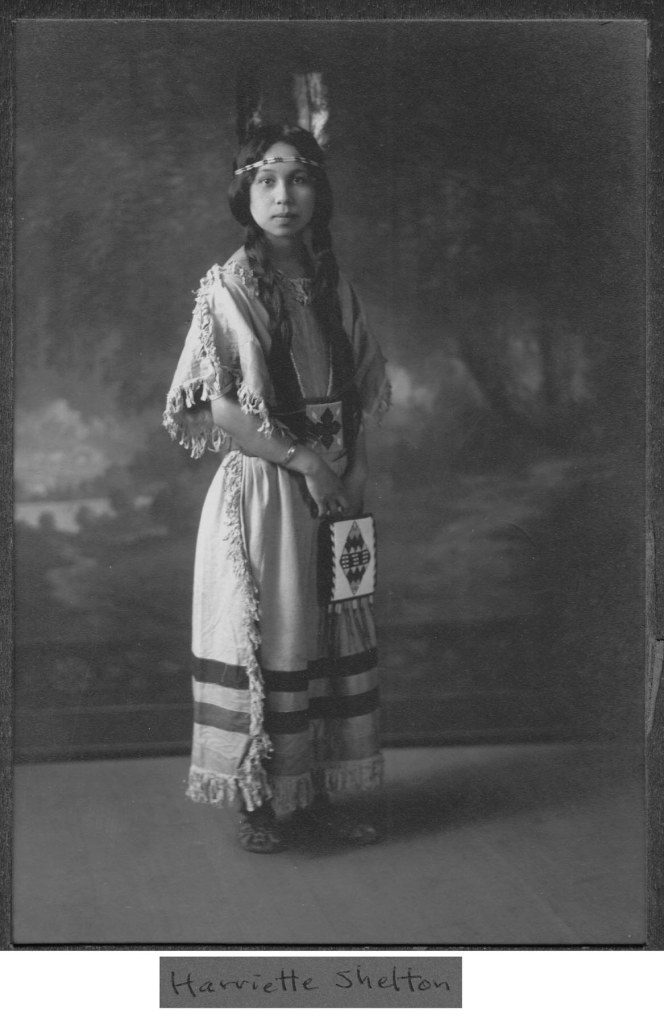
Parker’s great-great-grandmother, Harriette Shelton-Dover, recounted the beatings she received as a student at Tulalip in an autobiography, ‘Tulalip, From My Heart.’
Courtesy of the Hibulb Cultural Center, Tulalip, WA
In her 1991 autobiography, Tulalip, From My Heart, Shelton-Dover recalled a nun hitting her with a strap made out of a horse and buggy harness, which cut her skin and made it bleed: “The straps wrapped around my whole body. She was a tall woman, big and strong. She swung her arms way out, and she made that strap swing around my neck and she nearly knocked me out. She could hardly breathe, she was so mad. I went sailing across the hall and my head crashed into the wall.”
Shelton-Drover grew up to become a wife, mother, and grandmother, a college graduate, and tribal chairwoman. She reestablished the once federally banned First Salmon Ceremony, done annually in August to honor the return of the first king salmon of the season at the Longhouse near Tulalip Bay — the ancient spiritual center of the Tulalip. (Salmon are a staple diet for the tribe and the ceremony of feasting, singing traditional songs, and recounting the story of an alliance between the fish, the Tulalip, and many other bands in the Puget Sound area is widely celebrated.) She lived a rich life to the age of 86. But her time at the Tulalip boarding school still reverberates through her family.
Today, it’s empty inside the colonial-style building of the old school. Its wooden floors are polished to a shine, the industrial kitchen has been updated with modern appliances and plumbing in the near century since its closing. From time to time, the space is used to host community events. Still, echoes of crying children can be heard here, says Parker. Her long, chestnut colored hair softly frames her face as she scans the room. She squeezes her almond shaped brown eyes shut and winces.
“The kids were marched everywhere. This was a concentration camp,” she says. She pauses to gaze out a paneled window toward the picturesque ocean bay, whose surrounding lands her ancestors have inhabited for time immemorial.
The Tulalip (meaning “small-mouthed bay”) reservation has a population of 2,700. Encompassing 22,600 acres along the coast, it’s the traditional territory of the Duwamish, Snohomish, Snoqualmie, Skagit, Suiattle, Samish, and Stillaguamish people. Tulalip’s borders are framed by giant evergreen forests, the city of Marysville to the east and the towering Olympic and Cascade mountains. The tribe’s crest of an orca whale is carved into public buildings and traditional artworks like paintings, cedar carved paddles, masks, and large sculptures depict ancient legends throughout the Tulalip community.
The boarding school, which operated from 1857 to 1932, served as a hub for thousands of Native children who were shipped in from neighboring reservations. Yet, hardly anyone speaks about what happened here.
“It’s been such a deafening silence,” Parker says. “The schools did a really good job of making sure our kids almost never talked again.”
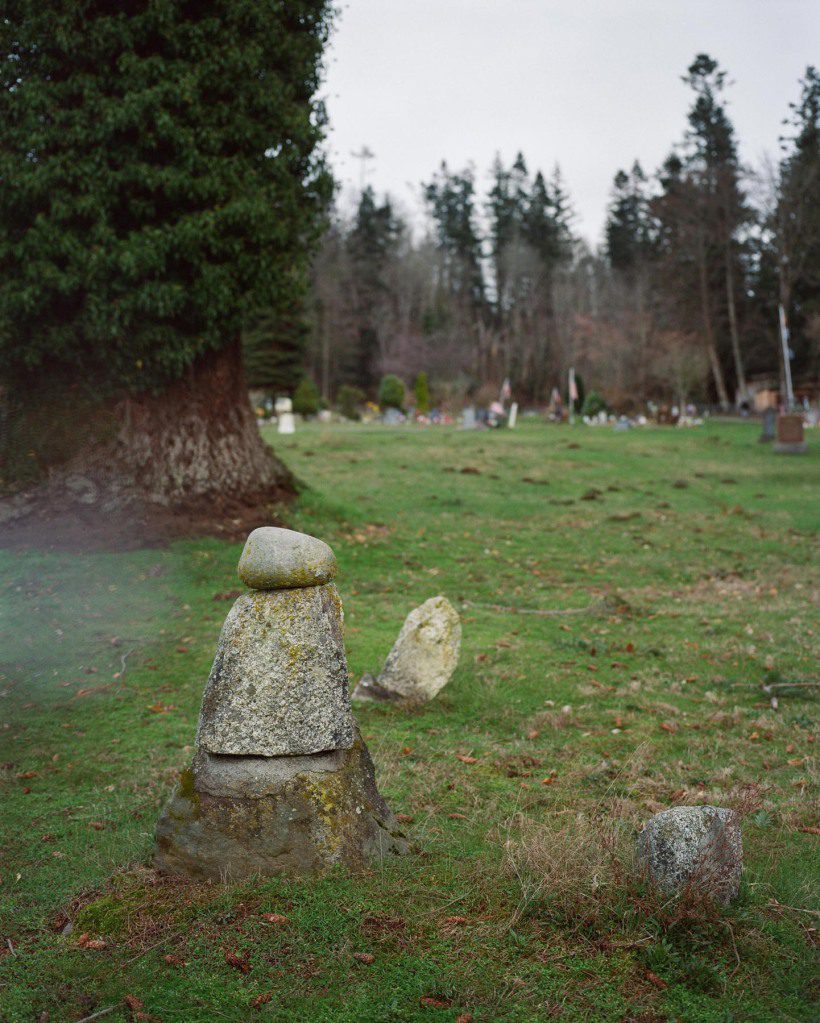
Unmarked graves at the Tulalip Indian Reservation Cemetery in Mission Beach, not far from the old boarding school grounds. Parker believes there are more burial mounds under the school.
Annie Marie Musselman for Rolling Stone
FINALLY, THANKS TO HAALAND’S “Road to Healing” tour and the work for organizations like NABS, that is changing. The last Indian boarding school in America closed in 1978, when Native American parents gained the legal right to deny their children’s placement in boarding schools via the Indian Child Welfare Act. But the distressing testimonies of survivors live on through the generations. Parker has taken in hundreds of accounts from boarding school survivors across America and describes them as “unimaginable — beatings, strangulation, and being chained to radiators. I mean, just being taken from your family alone is traumatic.”
There are recurring themes from survivors that Parker struggles to comprehend.
“Another one of the things we’ve heard throughout the country are stories about incinerators. Stories of young girls having babies from priests after being raped, and then we’ve heard that these babies had to be disposed of right away. There are just repeated stories about the smell of burning flesh. Every time we hear it…it’s just sickening.”
There are 31 unidentified graves on the southern half of the Mission Beach cemetery in Tulalip. The first boarding school campus was located not far below the cemetery, on the southern bank of Tulalip Bay, before it burned down in 1902. It was later moved to its current location. Parker, local historians, and the tribal chairwoman believe some of the nameless graves could belong to children who died under unknown circumstances at the school. Parker also thinks there could be bodies that have never been found.
“There’s a burial mound possibly under the old school grounds,” Parker tells Tulalip Chairwoman Teri Gobin in Gobin’s office, as the two discuss potential strategies to begin the painstaking process of identifying lost children.
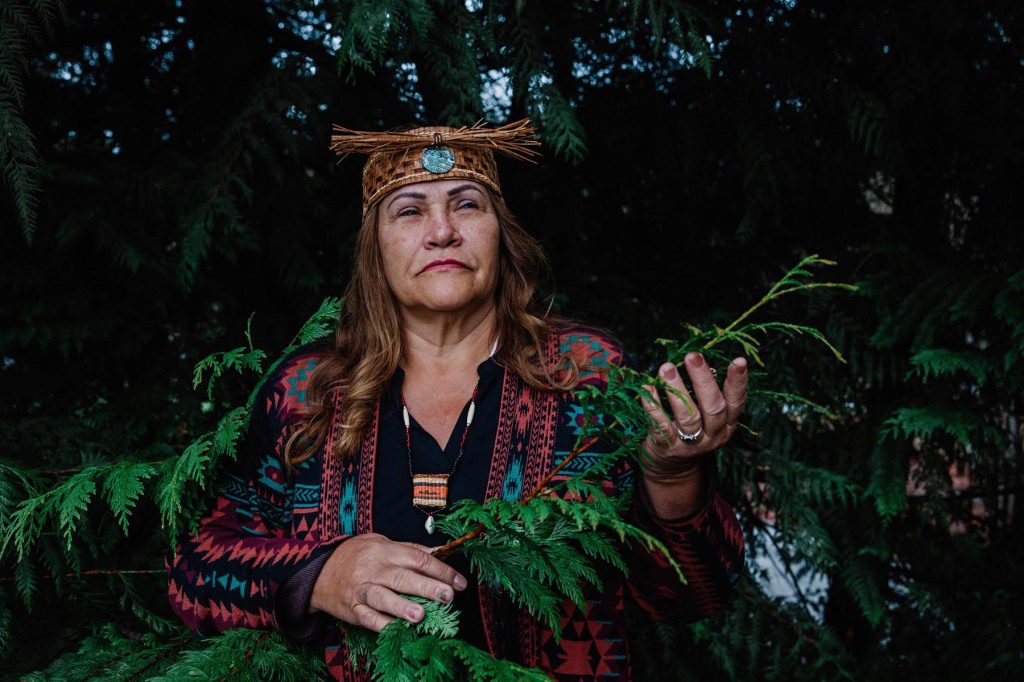
Tulalip Chairwoman Teri Gobin says the American public “is not ready to admit what their ancestors did.” She adds, “There’s still a lot of healing that needs to happen.”
Annie Marie Musselman for Rolling Stone
“OK, yes, we will search the school grounds,” Gobin says, reaching for a file folder on her desk. She presents us with copies of a letter dated Oct. 29, 1889. The letter is written by the former Tulalip Indian agent and Catholic missionary Eugene Casimir Chirouse.
Chirouse wrote to the then Secretary of the Interior, Columbus Delano, outlining the contents of “objects” he collected from Tulalip “without cost.” One item he lists is the skull of a young Tulalip girl. “The small skull is that of […] a child of 5 or 6 years of age,” he wrote. “Her parents are still living and they do not know that the skull of their child has gone to Washington.”
The letter surfaced only recently. Gobin’s late father, Stanley Jones Sr., was an avid researcher and had discovered it amongst the records in the National Museum in Washington, D.C. Both Parker and Gobin are furious that the child’s remains were taken. Even though over 100 years have passed, they’re determined to find out where the child’s skull is and bring her home to be laid to rest.
“I don’t think that the public is ready to admit what their ancestors did,” says Gobin. A traditional woven cedar headband rests atop her caramel-streaked hair. She sits stoically glancing at a view of thick forest being quenched by falling rain outside her office window.
“You know, most people in the U.S. have no idea about the damage that was done,” says Gobin, drawing in a deep breath and leaning back into her chair. Her grandfather attended the Tulalip boarding school and her father was shipped to the Chemawa Indian School in Oregon. Barely any family in Indian country was left untouched by this legacy of trauma. “It’s about time. Our history has been hidden — the attempted genocide of our people. We have been resilient and survived through it, but they’ve taken away so much. There’s still a lot of healing that needs to happen.”
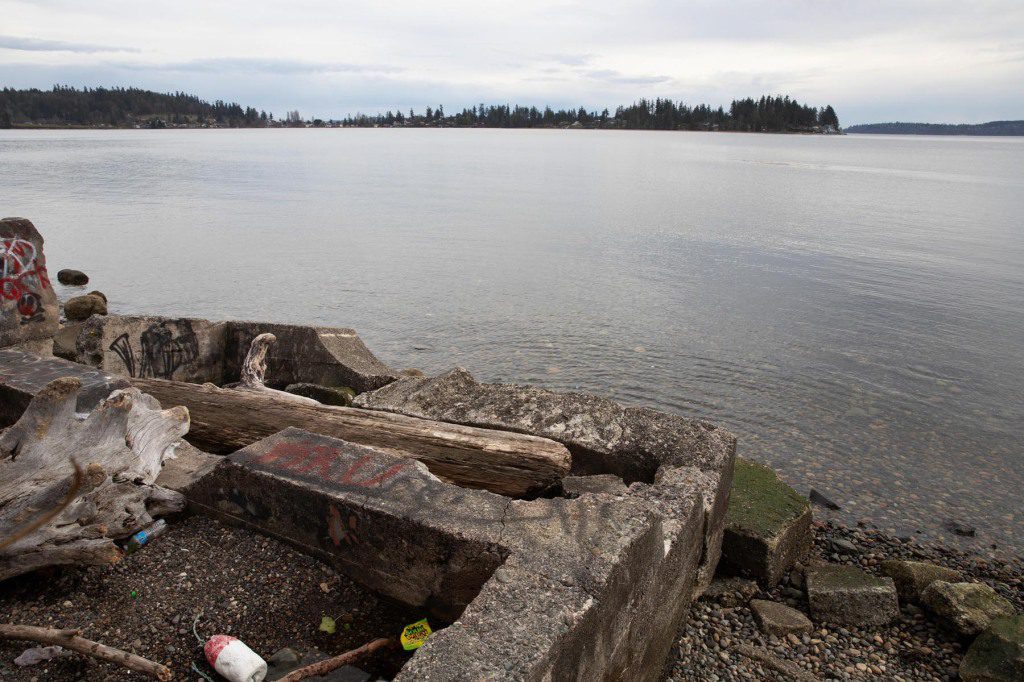
The concrete remnants of a federal jail several yards from the Tulalip boarding school. Children were sent there for infractions as minor as speaking a word in their native language.
Annie Marie Musselman
The crumbling, graffiti-covered remnants of a concrete federal prison built to jail any Indians who stepped out of line, or who were caught practicing traditional ceremonies or speaking their language, remain on the rocky banks of Tulalip Bay. It’s located approximately 10 yards south of the former Indian boarding school. And sometimes children were sent there, including Tulalip tribal member Chelsea Craig’s great-grandmother, Cecilia Young, in 1900.
“They pulled her out of bed in the middle of the night,” says Craig. Just five years old at the time, her grandmother had been caught speaking a word in her Lushootseed language, and a concrete cell was her penalty. Craig says her grandmother became terrified when water from the rising tide started flooding into the cell. “She was in that jail cell for three days and three nights just for saying one word. And she had to float because of the water in there. Grandma said she didn’t think she was gonna make it.”
Young spent the next 14 years at the school, experiencing physical and sexual abuse, according to Craig. Despite going on to become a celebrated matriarch living to the age of 91, she never completely shook the afflictions of Indian boarding school.
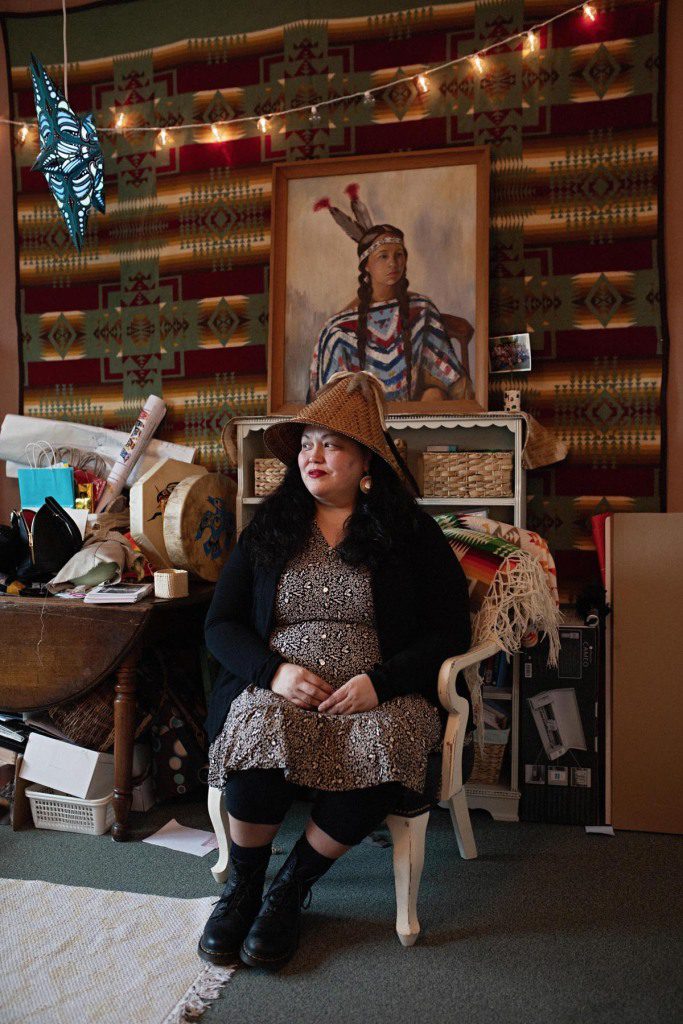
Chelsea Craig, vice principal of Quil Ceda Elementary School in Tulalip, where she is introducing curriculum focused on “decolonizing the classroom.”
Annie Marie Musselman for Rolling Stone
Still, Craig believes her grandmother returned to her own when she died. With tears in her eyes, Craig describes being at Young’s deathbed, her grandmother’s hands hanging over the sides of her hospital bed during her last breaths. “She says, ‘Oh, I’m just touching the water. I’m in a canoe.’” Young would come to pick her up in the summers in a canoe and bring her out to traditional territories. Once they got far enough away from the boarding school, they would go through a ceremony of bathing, dipping in the Salish Sea to wash off all that sickness that she was living with. “And so, I know now, she’s whole,” Craig says.
Craig named her first daughter after her late grandmother’s Indian name, Celum — the name Young proudly carried until it was stripped from her and replaced with the English name Cecelia. Now, Craig is working to undo the harms of Indian boarding school for children of this generation. She is the assistant principal of Quil Ceda Tulalip Elementary, the first tribal person to hold the position. For eight minutes every morning, she hosts an assembly where the children gather to sing and drum a Tulalip song, dance, and conduct a sharing session in the form of the ancestral Longhouse tradition. Craig is also developing programming around the medicine wheel, holistic teachings, and “decolonizing the classroom” experience.
“They might not be sexually assaulting kids and beating them [at schools today], but the boarding school mentality still exists,” she says, such as expecting children to conform, using control, silence, or erasure of who they are to become “educational soldiers.” She continues, “Everything that you see here, everything that the air touches in school, is a colonized space. Everything needs to be reimagined.”
To that end, the Quil Ceda school has “pod” groups — modeled after clans or pods of Orca whales — where children can be connected to each other and be paired with a counselor if needed. “So, the idea is, we’re a collective in a family,” Craig explains. “And we have this room where, if kids were having a hard time, they’d be sent there to get comfort.”
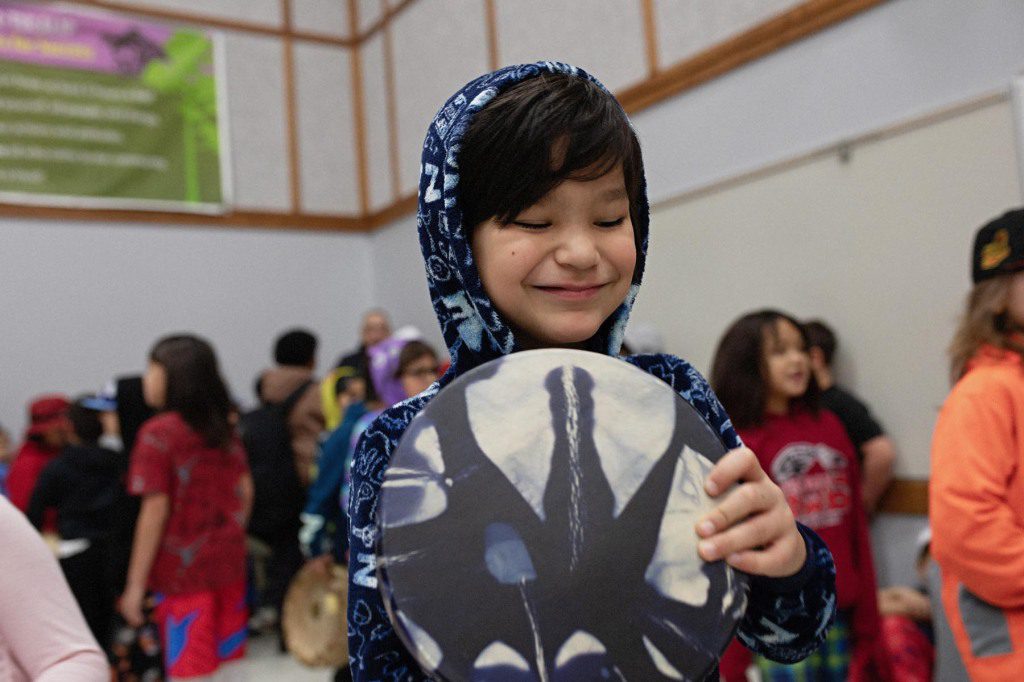
At morning assembly at Quil Ceda, students perform a Tulalip song and dance, and conduct a sharing session in the ancestral Longhouse tradition.
Annie Marie Musselman for Rolling Stone
Craig believes the children are the walking prayers of their ancestors, and it’s her job to carry out the healing process in her grandmother’s memory. “I think that she would laugh and just be amazed that we’re able to be ourselves. Even just to see our language in this space, I know she’d be happy.”
AS MATTHEW WARBONNET prepares to once again testify at the upcoming “Road to Healing” tour, he admits he’s struggling to cope. He’s experiencing nightmares, flashbacks, and bouts of crying. He worries the public process of truth-telling might be “opening a can of worms” for other survivors who may not be able to handle the anguish. Warbonnet insists he isn’t speaking out for his own healing, because it doesn’t help him. He’s speaking out because he wants the truth to be known and for the perpetrators to be held to account.
“I’m more depressed now than I’ve been in years,” he says. “I sat that night [before I testified to Congress] and cried. My wife knows when I’m quiet, she knows there’s something wrong.”
Earlier, Warbonnet had told me there was “a lot of rage” inside him when he was a boy. He was able to quell it, he’d said, with the help of his Lakota parents: “I talked to my dad about these things when I was at school and he gave me a song. And he says, ‘Only you have the power to decide how you’re going to live today. No one else. You can live it being angry and mean or you can live in appreciation for what the Creator has given you.’ So every day at that school, in my mind, in my heart, I would sing that song [he gave me]. And I never allowed those sons of bitches to decide how I was going to live.”
As an adult, he vowed not to use drugs or drink alcohol, because he saw what it did to many of his former classmates. “Because that rage was in me,” he’d explained, “and I knew it didn’t take much for it to come out. [My siblings and I] did not become abusers of ourselves, of our families, of our communities. Dad set a good example for us.”
But it’s clear some of that rage still lives inside him. As talk turns to the Catholic church, it peeks out.
When Pope Francis apologized to Indian Residential School survivors in Canada at the Vatican in the spring of 2022, and then to survivors during his “penitential pilgrimage” that July, Warbonnet says it seemed more like a smoke-and-mirrors foray. He’s not sure an apology from the Pope or other authorities would be of any benefit in the United States.
“What the hell are they gonna do?” he shouts. Suddenly, his demeanor shifts and his hands wave in front of him as he denounces the atonement. “Take a look at all these damn communities. What the fuck are they going to do? They can’t be sorry. Are they sorry that the communities are like that? That our children are committing suicide? What the hell are they sorry for? I’m sorry they’re not in there, helping.”
Tears stream through the grooves of wrinkles on his face as he heaves to catch his breath. He says he wants repatriation in the form of financial resources and federal reserve land returned to Native communities, which are key in helping to restore culture and identity: “Do they have a program that carries out to the future? Some say ‘Oh, we have to give these people money for something that happened a hundred years ago’, blah, blah, blah. I say to them, ‘Restore to us those federal lands that are not being occupied right now and go back to the children and grandchildren and take responsibility for what they did to those kids.’”
Later, on the grounds of the former Tulalip Indian boarding school, Parker is saying a prayer. She’s overlooking the ocean while standing on the manicured back lawn. Softly gripping her ceremonial rattle in her right hand, she sings a traditional Tulalip song, belting out the language that the boarding school attempted to eradicate. Her lips tremble and an outpouring of grief wets her eyes as she proclaims the silence is broken.
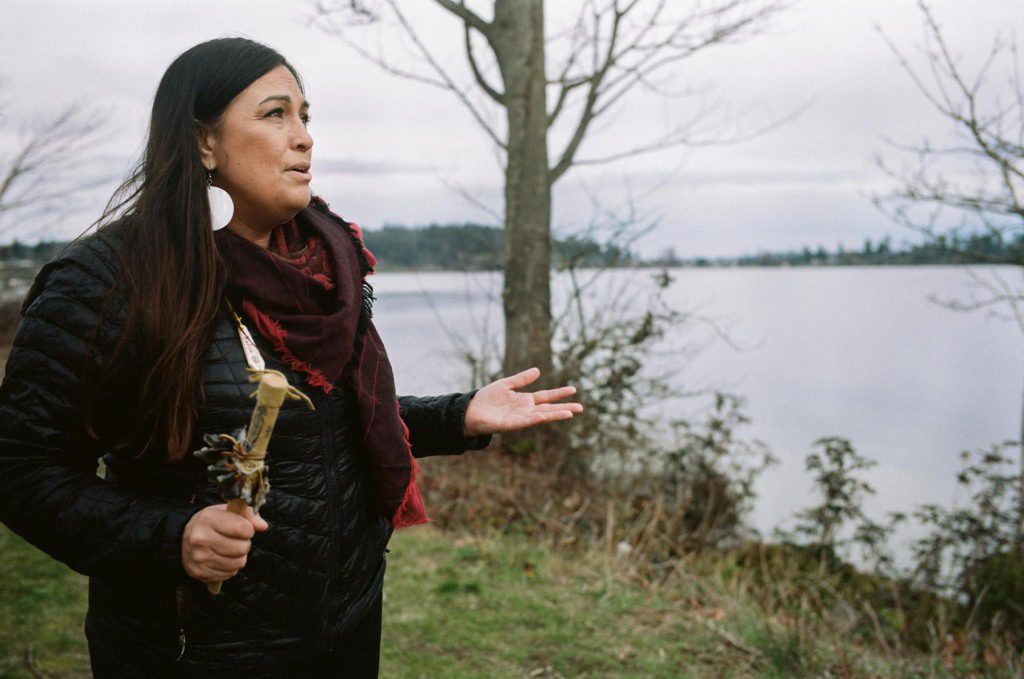
Parker prays on the Tulalip grounds. “You can’t do this amount of harm to a people and think that nothing is going to take place,” she says.
Annie Marie Musselman for Rolling Stone
“You can’t do this amount of harm to a people and to the earth and think that nothing is going to take place, because it will,” she says, adding that she is unwavering in her quest to secure justice for survivors, no matter how long it may take.
“There’s a memory in our pathways, there’s a memory on this earth, and that can’t be erased. And we must work to heal. We have to look at the atrocities of the past. Healing looks like each person who went through the boarding school system, or who had a family member who went through the boarding school system, that they have a voice and they have knowledge that’s needed for them to understand what happened. And for boarding school survivors to feel that they’re finally free to come out of the darkness.”
This story was produced in partnership with the Pulitzer Center.
